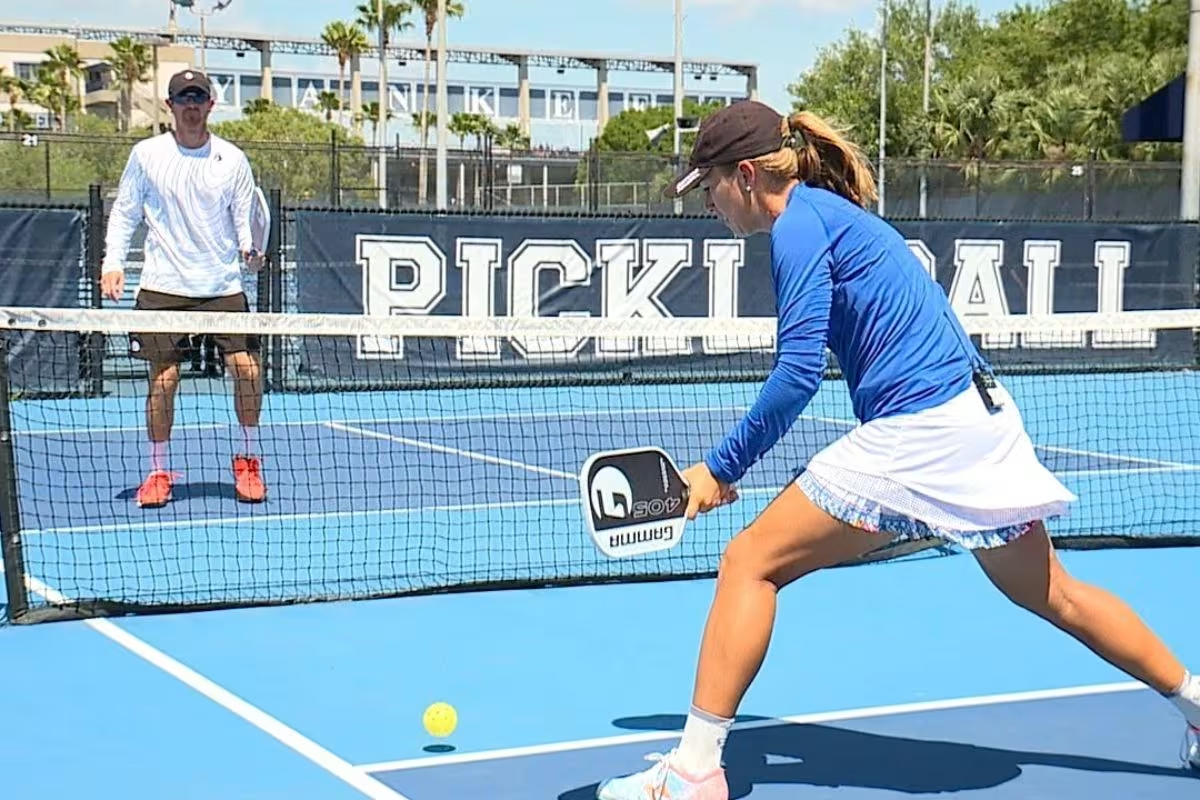Master the Art of Serving: When it comes to pickleball, every detail matters, and where you stand when serving is no exception. Pickleball serving isn’t just about getting the ball in play; it’s about setting the tone for the point, keeping your opponent off-balance, and maximizing your angles. So, what’s the best spot to stand for a serve? Experts recommend standing about two feet from the center line, a position that offers versatility and makes it difficult for opponents to predict your next move.
Maximizing Angle and Versatility
Standing two feet from the center line opens up the entire pickleball court, allowing you to choose whether to serve down the tee or out wide. This position is key because it prevents your opponent from easily guessing your serve direction. With the ability to hit a variety of angles, you keep them on their toes, forcing them to react rather than anticipate. The value here is twofold—first, you gain control over the pace and placement of the serve; second, your opponent is left guessing.
Conversely, standing too far out wide limits your options. When you’re near the sideline, you’re essentially telegraphing where you’re going to serve because your only viable option is to hit the ball wide. The more predictable your serve becomes, the easier it is for your opponent to position themselves, making it harder for you to take control of the point.
Deceptive Strategy for the Serve
The strategic advantage of standing near the middle goes beyond simply giving you more angles. By positioning yourself closer to the center line, you disguise your intentions. In competitive pickleball, telegraphing your shots is something to avoid at all costs. A savvy opponent can adjust their positioning based on where you stand before you even hit the ball. The middle starting position keeps your options open, and by doing so, it forces your opponent to stay honest, preventing them from cheating toward any one side of the court.
Additionally, standing closer to the middle minimizes the risk of serving the ball out of bounds. When serving from wide positions, you flirt with the risk of an out-of-bounds serve, especially when aiming down the tee. In contrast, serving from a central position allows you to take advantage of the entire service box without worrying too much about hitting the sideline.
Keeping Opponents Guessing
By adopting this middle-serving strategy, you keep your opponent guessing, and in pickleball, unpredictability is a significant asset. The goal is not just to serve the ball in but to do so in a way that disrupts your opponent’s rhythm. From this central position, you maintain the element of surprise, able to shift between a wide serve or a straight shot down the middle with minimal adjustments in your motion.
A smart serve is more than just a routine action—it’s the opening move in a tactical battle. The more you practice standing near the center line, the more comfortable you’ll get with varying your serves, making you a harder opponent to read.
Incorporating this strategy into your game could be a game-changer, offering you an edge over opponents who may not have thought about the importance of serving position. By mastering this detail, you add another layer to your game that could prove crucial in tight matches.
News in Brief: Master the Art of Serving
When serving in pickleball, positioning is crucial for gaining a strategic advantage. Experts recommend standing about two feet from the center line to maximize angles and maintain versatility. This position allows players to serve down the tee or out wide, keeping opponents guessing and off-balance. Standing too far out limits serve options and makes them predictable. Additionally, a central position reduces the risk of out-of-bounds serves while enhancing deception. By incorporating this middle-serving strategy, pickleball players can disrupt opponents’ rhythms and improve their overall pickleball game, making them tougher to read during critical points in pickleball matches.
ALSO READ: OAP ‘Paddle Battle’: The Pickleball Tournament That Supports Animal Welfare


